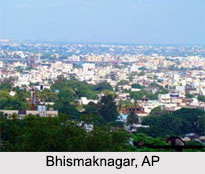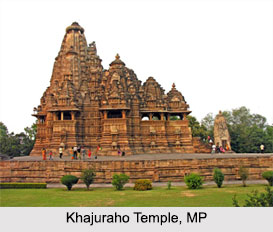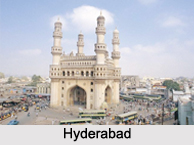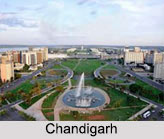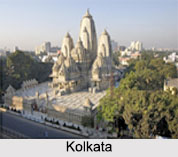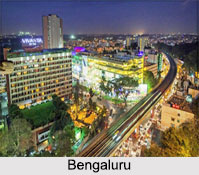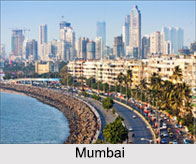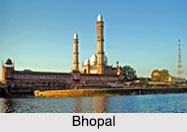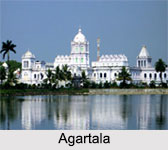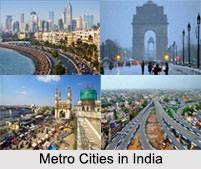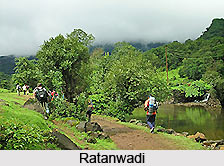 Tourism in Bhandardara gives one the clear picture of biking; trekking and the adventure while one visit the forts of later medieval era. Bhandardara is the natural abode of Mount Kalsubai Peak, which is the highest peak (5,400 ft or 1,600 m) in Maharashtra.
Tourism in Bhandardara gives one the clear picture of biking; trekking and the adventure while one visit the forts of later medieval era. Bhandardara is the natural abode of Mount Kalsubai Peak, which is the highest peak (5,400 ft or 1,600 m) in Maharashtra.
Bhandardara is popular place for angling. The tourists can spot a number of large fish over here. Tourists can go angling, but boats are not allowed. Bhandardara provides plenty of opportunity for small treks and hikes for adventure lovers. The most interesting and exciting trek is the small trek to Ratangad fort. To reach Ratangad fort one should take the boat over the small lake near the village Ratanwadi.
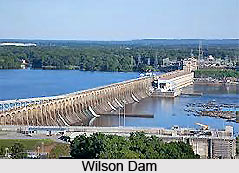 Tourism in Bhandardara comprises a large number of tourist destinations like Kalsubai Peak, Randhaa Waterfalls, Ratangad Fort, Arthur Lake, Harishchandragad and many other tourist destinations which allure not only the national tourists but also they attracts the international adventure lovers.
Tourism in Bhandardara comprises a large number of tourist destinations like Kalsubai Peak, Randhaa Waterfalls, Ratangad Fort, Arthur Lake, Harishchandragad and many other tourist destinations which allure not only the national tourists but also they attracts the international adventure lovers.
Wilson Dam
The main attraction of the tourism in Bhandardara is Wilson Dam on the Pravara River. This dam was built in 1910. The scenic Umbrella Falls also draw visitors, although it can be seen only during the monsoons between July and October. It is about 10 km away from Shendi Village where Randhaa Waterfalls is located.
Ratangad Fort
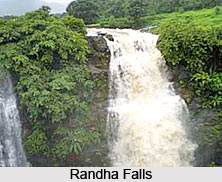 Ratangad fort is around 22 km from Shendi or Bhandardara, and is connected by both roadway, and ferry across the Lake Arthur. On the Kalsubai Peak side, at the far end of a 22 km roadway across luscious forests, and tribal villages, is Konkankada from where the views of the plains are breathtaking.
Ratangad fort is around 22 km from Shendi or Bhandardara, and is connected by both roadway, and ferry across the Lake Arthur. On the Kalsubai Peak side, at the far end of a 22 km roadway across luscious forests, and tribal villages, is Konkankada from where the views of the plains are breathtaking.
Harishchandragad
Harishchandragad is another nearby mountain hiking spot with ancient temples on top.
Ratanwadi
Ratanwadi area is known for its scenic boat rides. Ratangad is an interesting fortress, situated at the edge of Western Ghats Mountain Range in India with numerous water cisterns and caves. It also commands an excellent view all around and is said to be the favourite fort of the Maratha Emperor Chatrapati Shivaji.
Arthur Lake
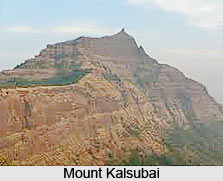 Arthur Lake has the clear and placid lake that is bounded by thick canopied forests of the Sahyadri hills. The Lake gets its water from the Pravara River. The lake and its surroundings offer a charming display.
Arthur Lake has the clear and placid lake that is bounded by thick canopied forests of the Sahyadri hills. The Lake gets its water from the Pravara River. The lake and its surroundings offer a charming display.
Randha Falls
Randha Falls is a good waterfall to visit. The roaring Pravara River descends down from a height of 170 ft into a beautiful gorge. However the waterfalls are magnificent only during monsoons and are not so great in other seasons.
Ghatghar
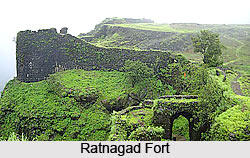 Ghatghar is located at about 22 km from Bhandardara. Ghatghar is a popular viewpoint in the area. It offers a panoramic view of the Sahyadri Mountain Range.
Ghatghar is located at about 22 km from Bhandardara. Ghatghar is a popular viewpoint in the area. It offers a panoramic view of the Sahyadri Mountain Range.
Mount Kalsubai
Mount Kalsubai is the highest peak of the Sahyadri range. Mount Kalsubai with its height and view is popular for trekking and so are the hills near Kalsubai. The trek is physically demanding, as Bhandardara is located on a hill and to reach this place one has to do lots of trekking.
